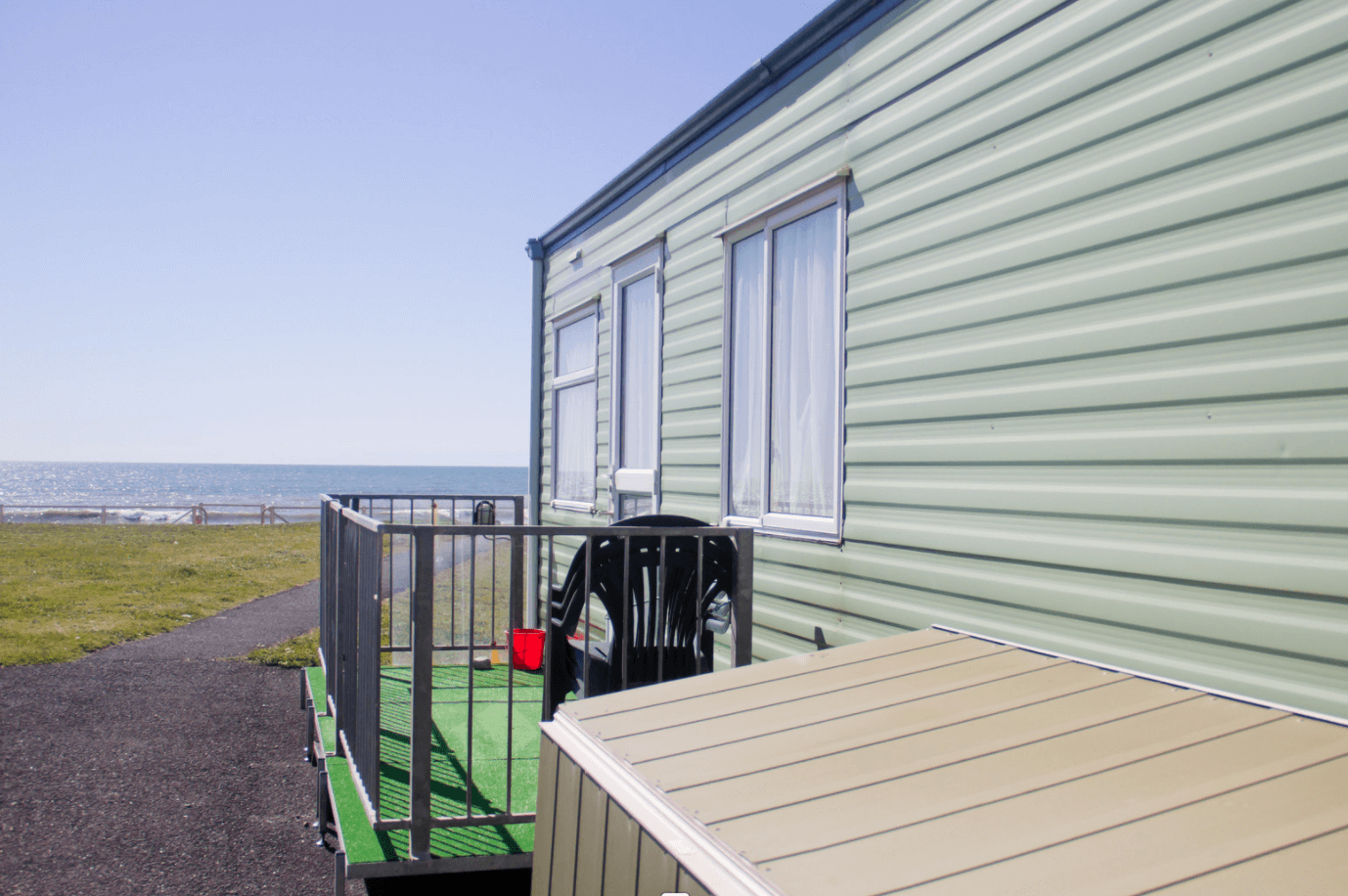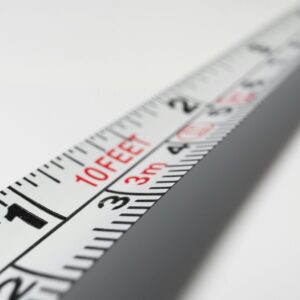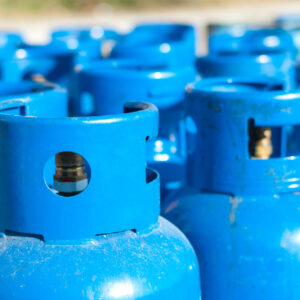Can A Static Caravan Blow Over? A static caravan remains in the same place for a long period, it’s possible to move a static caravan but this isn’t something you’ll be doing often (or ever!). This is in contrast to a touring caravan which can be moved regularly. These caravans are often used as holiday homes because the van has an integral kitchen, toilet and sleeping areas. When the wind howls and the rain pours down, the very nature of a caravan – its style of construction and the fact that many are parked on exposed coastal or rural sites – makes them especially susceptible to loss and damage.
While there is a limited chance of static caravans being blown over in severe winds, the consequences can be disastrous. To avoid this, all static caravans must be moored at the corners or fitted with skirting.
Static caravans are often located in rural areas exposed to higher speeds of wind because there are no buildings or large structures to block the flow of air. If possible, these locations should be avoided, particularly if high-speed winds are expected. It is impossible to provide guidance on whether or not static caravans should be put in exposed locations. The owners themselves best make this decision.
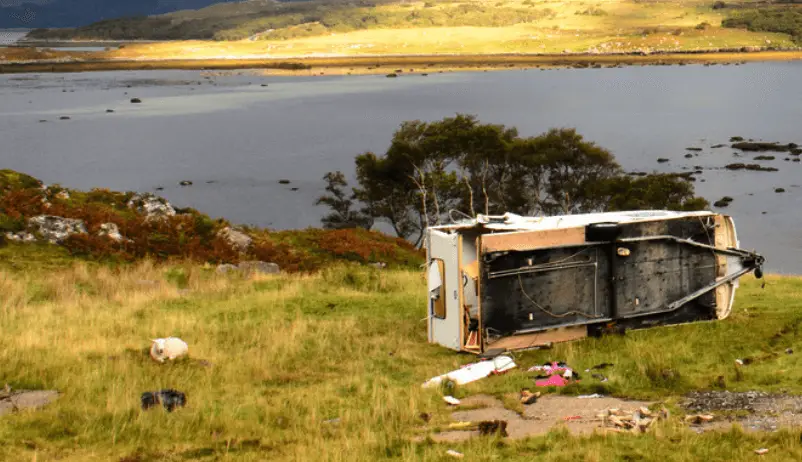
People must take steps to prevent their static caravan from flying away, blowing over and causing significant damage to other buildings and people. Some simple steps can be taken to make it more secure.
1. Caravans should be securely fixed to the ground with a mixture of pegs and guide ropes. This is because caravans can roll uphill in heavy winds if they do not have anything keeping them firmly in place. A guide rope on each corner and three guide ropes running parallel along the length of the caravan will provide maximum stability.
2. When a static caravan is put in place for the first time, it should be firmly attached to the ground using whatever methods are appropriate for its make and design. An engineer can advise owners on how their caravan should be secured safely. In some cases, it will be necessary to call in a firm of professional to help with this.
3. the caravan’s windows must be closed when not being moved. It should also be covered to ensure that it stays well ventilated inside, especially during warm weather. The guide ropes should be checked regularly to ensure they are strong enough for their purpose and not start to fray.
4. All owners of static caravans should be fully insured for their units, as these can easily become damaged during strong winds. It is also important to keep the insurance documentation safe as, without this, it may be more difficult to claim compensation if damage occurs due to high winds.
Can A Static Caravan Blow Over?
Even if you’re towing at a consistent pace on a flat road, high winds can render your caravan unstable, and a severe gust can force it to snake or overturn.
How Strong Does It Have To Be For A Caravan To Be Blown Over?
In a nutshell, you can tow a caravan in 40 mph winds. In general, avoid pulling a caravan/trailer in winds over 50 mph, as this can be dangerous for you and other drivers. Of course other road conditions and driver ability come into play too.
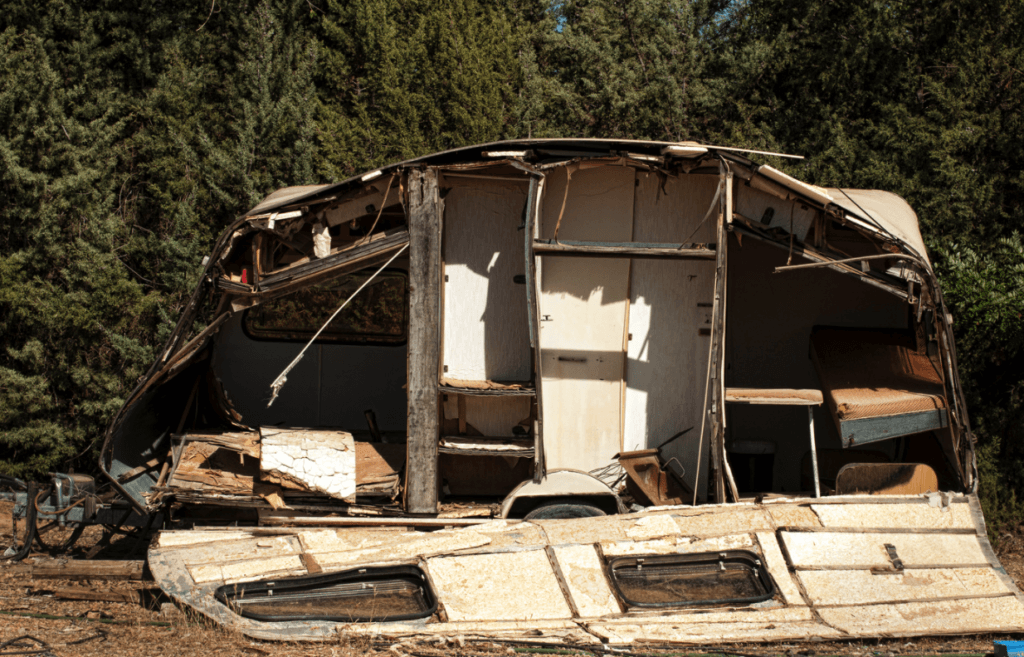
In Severe Winds, How Do You Keep A Caravan Safe?
In the event of high winds, you may wish to seek alternate lodging and secure your caravan by – Weighing down the caravan with heavy things put in the centre can assist prevent it from being blown over. – Use strong straps (storm straps) and heavy-duty screw-in ground pegs to secure your caravan to the ground.
Is It Safe To Use A Static Caravan During A Storm?
Some static caravan parks are more susceptible to storm damage than others. Even on a generally sheltered site, there may be trees, bushes, or structures close to your pitch that cause you concern.
What Happens If A Static Caravan Is Struck By Lightning?
When struck by lightning, a caravan is not a “Faraday Cage,” as it is substantially less safe than a car. Because a charge flows around the outside of a conductor, Mr. Farady discovered that the car’s steel body kept the occupants safe from a lightning strike.
How Can I Keep My Caravan From Swaying In The Breeze?
If the winds are modest, an awning storm strap that hooks over the awning and is pinned in on both sides to pin the awning down would be a good option. If high winds are expected, place your entire awning bag in the centre of the caravan’s floor as a weight to offer your caravan greater stability.
What Is The Maximum Wind Speed That A Caravan Awning Can Withstand?
Most self-supported awnings are tested at wind speeds of 20 to 25 miles per hour; however, this assumes a steady breeze rather than an irregular buffeting wind, which can be significantly more dangerous and damaging.
Is It Possible To Get Struck By Lightning In A Caravan?
In metal-bodied caravans, RVs, and motorhome, the risk of lightning is extremely minimal. A metal structure (even one made of metallic mesh) creates a ‘Faraday cage’ within which all current flows to earth through the external metal. You might not even be aware of a strike if you’re in one of these RVs.
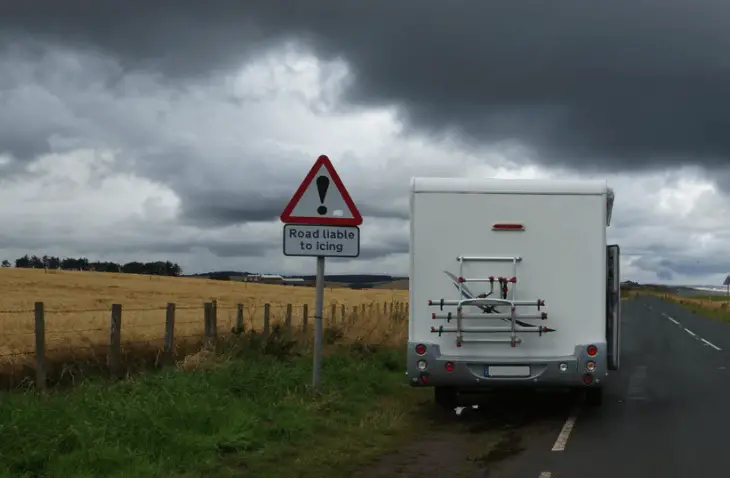
What Are The Functions Of Caravan Sway Bars?
It operates by stiffening or producing friction between the caravan and the tow vehicle’s connection. The amount of friction used is determined by the towing conditions and the caravan weight. These sway bars keep your car from wobbling even more.
Is It Safe To Camp During A Thunderstorm?
Yes, you’re entirely safe in your RV as long as it’s equipped to withstand a lightning storm. Your RV must have an aluminium/steel roof or frame if you want to use it as a shelter. It’s possible to have both.
What wind strength can a static caravan withstand?
Static caravans can generally withstand winds up to Beaufort Scale 8, which is equivalent to a fresh breeze of between 34 and 40 knots or 39 and 46 mph (63 and 74 km/h). However, it’s important to note that the ability of a static caravan to withstand wind will depend on factors such as its size, weight, and design, as well as the direction and duration of the wind. It is recommended to follow the manufacturer’s guidelines and to take precautions such as securing loose items and closing windows and doors in high winds to prevent damage.
Can I stop my caravan shaking in wind?
It can be difficult to completely stop a caravan from shaking in the wind, but there are several things you can do to reduce the amount of movement:
Use stabilizers – stabilizers can help reduce the amount of movement in a caravan by providing additional support and improving stability.
Position the caravan correctly – positioning the caravan so that it is facing into the wind can help reduce the amount of movement caused by the wind.
Use windbreaks – setting up windbreaks around the caravan can help reduce the amount of wind hitting the caravan and causing it to shake.
Reduce the caravan’s height – lowering the caravan’s height by lowering the jockey wheel or using axle stands can help reduce the amount of wind hitting the caravan and causing it to shake.
Secure loose items – securing loose items inside and outside the caravan can help reduce the amount of movement caused by the wind.
By following these tips, you can help reduce the amount of movement and shaking in your caravan during windy conditions.
Are static caravans safe in lightning?
Static caravans can be safe during lightning strikes if they are properly grounded and have an outer layer of metal. The metal outer layer of a static caravan can help to conduct the electrical charge from a lightning strike and direct it safely into the ground. However, if a static caravan is not properly grounded or does not have an outer layer of metal, it may not be safe during a lightning strike. In general, it is recommended to avoid using electrical appliances and to stay away from windows and doors during a lightning storm to reduce the risk of injury.
Are static caravan awnings safe in wind?
Static caravan awnings can be safe in wind if they are properly secured and designed to withstand windy conditions. However, it’s important to note that awnings can be vulnerable to damage in high winds, and precautions should be taken to prevent damage or injury. Some tips for using static caravan awnings in windy conditions include:
1. Check the weather forecast – avoid using the awning in high winds or severe weather conditions.
2. Use storm straps – use storm straps to secure the awning to the ground and prevent it from being blown away.
3. Use tie-downs – use tie-downs to secure the awning to the caravan and prevent it from flapping in the wind.
4. Close windows and doors – close windows and doors in the caravan to prevent wind from entering and causing damage.
5. Take down the awning – if the wind becomes too strong, take down the awning to prevent damage or injury.
By following these tips and using common sense, you can help ensure the safety of yourself and others when using a static caravan awning in windy conditions.
How to deal with caravan blown over?
If your caravan has blown over in wind, it’s important to take the following steps:
1. Check for injuries – if anyone was inside the caravan at the time of the incident, check for injuries and seek medical attention if necessary.
2. Secure the area – if the caravan is blocking a road or posing a hazard to other people, secure the area by putting up warning signs or using cones.
3. Contact emergency services – if necessary, contact the emergency services for assistance.
4. Assess the damage – assess the damage to the caravan and surrounding area, and take photos for insurance purposes.
5. Contact your insurance company – contact your insurance company to report the incident and begin the claims process.
6. Arrange for the caravan to be removed – arrange for the caravan to be removed from the site and taken to a repair facility if necessary.
Remember, safety is always priority. Do not approach your caravan if it is not safe to do so.
Summary
It is your responsibility to take reasonable precautions to protect your static caravan during inclement weather, and there are a few simple and common-sense safeguards you should take.
For example, depending on the pitch you choose, your site may demand that your static house be securely anchored; if this is the case, you must ensure that anchor points are secure, and you may want to examine the benefits of anchoring your caravan anyhow, it may even be an insurance requirement.
